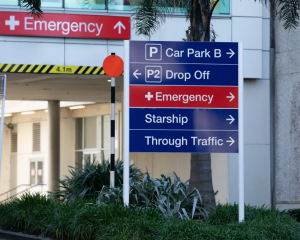
The victim's name was Sami Chakroun, 31, Tonga's assistant police commander Itu Tupouniua told a German press agency, Deutsche Presse Agentur (DPA).
The disclosure followed last week's release of the names of 70 people who drowned, which included two Germans and a French woman.
Mr Tupouniua said authorities have confirmed that one Hungarian passenger also perished on the boat.
But other survivors had not positively identified the man from pictures.
"I can only publicly reveal at this stage that he is a male who bought his ferry ticket at lunchtime from the office. We have his details and have informed our Foreign Ministry and been in contact with Hungary's embassy in Canberra, Australia," Mr Tupouniua told DPA.
"We should be in a position to release his details next week."
Police have now released the names of 71 people confirmed missing at sea out of 72 missing persons.
Most were Tongan, but the foreigners included: Sisiliah Rachelmana, Puleheloto, a 24 year old Niue policewoman of New Zealand citizenship, two 28-year-old Germans, Christian Langanke, and Diana Gmeinder, a French woman, Pauline Henry, and Daniel McMillan, a British man who had been living in New Zealand, whose body was recovered.
The wreck is at a depth of 110m, and Tonga's government has not decided whether to seek help from other countries to retrieve bodies.
According to a New Zealand expert in the use of remote-operated underwater vehicles, Keith Gordon, some of the difficulties of depth could be mitigated by using a ROV to provide real time viewing to workers on the surface.
"I would think the bodies could be recovered with the aid of ROV technology and at not a great cost," Mr Gordon told NZPA after viewing photographs of the sunken ferry.
He said "100 metres is not deep, there would not be the need for saturation diving systems and the ROV systems would not need to be large deep water sophisticated systems".
"The great visibility would also greatly aid such an operation".
"Also doing the operation the `Pacific Island' way could greatly alleviate logistical costs involved," he said.
Mr Gordon -- who has his own remote operated vehicles -- is best known for his book Deep Water Gold on the salvage of a wartime wreck, the RMS Niagara, off the Hen and Chicken Islands.
New Zealand and Australian salvage workers used makeshift equipment to recover 555 gold bars from a strong room deep in the hull of the ocean liner in 1941 -- at a depth of 121 metres -- using a human observer in a diving chamber to direct the operations.












